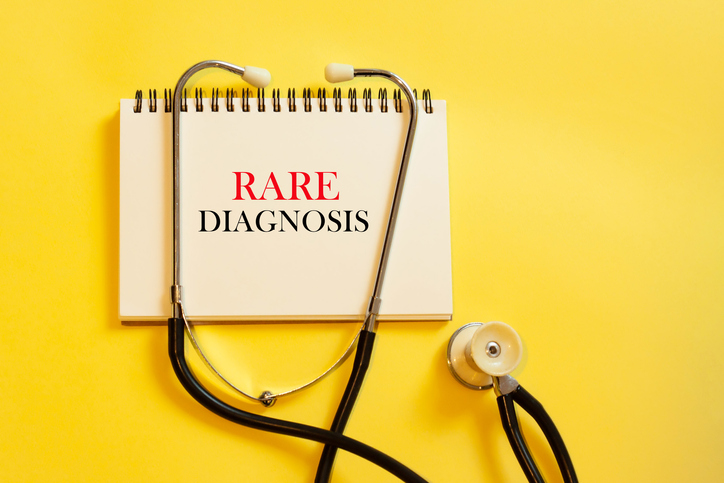Rare diseases are conditions with low prevalence, often complex and potentially life-threatening. Globally, they impact millions. In Australia, a disease is termed ‘rare’ if it affects less than 5 in 10,000 people, with over 2 million people affected cumulatively.1
Understanding HTA
HTA is a systematic process that evaluates the properties and impacts of health technologies and interventions, including their direct and intended effects, as well as any indirect or unintended consequences. This process plays a crucial role in informing healthcare decision-making, ensuring that resources are allocated efficiently to technologies that provide the most value. In the context of rare diseases, HTA takes on a unique role. It becomes the compass guiding the allocation of resources to therapies and treatments designed for conditions that affect only a small subset of the population.
Why HTA faces challenges with rare diseases?
Several factors complicate HTA’s application to rare diseases:
Data Challenges: Clinical trials often struggle with data collection due to patient scarcity. Additionally, the absence of treatments for many rare diseases raises ethical issues when designing control trials.
Economic Implications: Clinical development costs for rare diseases vary. Some research indicates fluctuating or equivalent costs, but methodologies differ. Also, the investment risk in rare disease treatments tends to be higher.
Ethical Concerns: The primary ethical debate revolves around treatment differentiation. The Australian healthcare system, like many others, is built on equitable access. Thus, treatment accessibility should be as efficient for rare diseases as it is for common conditions.
Country-Specific Approaches to HTA of Rare Diseases
Certain countries have recognised the need for specialised processes to assess healthcare technologies for rare diseases. For instance, France has implemented a distinct framework known as “Temporary Authorization for Use” (ATU) to expedite access to treatments for rare diseases while collecting real-world data. In the United States, the Orphan Drug Act incentivises the development of therapies for rare diseases.
Moreover, Canada’s Common Drug Review (CDR) and the pan-European Orphanet network facilitate collaboration and data-sharing efforts in the evaluation of rare disease treatments. These country-specific approaches serve as valuable examples of tailored solutions within the field of HTA for rare diseases.
Potential Solutions and Future Directions
The future of HTA for rare diseases holds promise through innovative approaches and international collaboration. Key potential solutions and future perspectives include:
Patient-Centred Data: Leveraging patient-generated data, often collected by advocacy groups and registries, can complement traditional clinical data, offering valuable insights into treatment outcomes and patient preferences.
Advanced Analytics: The application of artificial intelligence, machine learning, and Bayesian statistical methods can aid in extracting meaningful insights from limited datasets, enhancing the assessment of rare disease therapies.
Global Harmonisation: Collaborative efforts between countries, health organizations, and pharmaceutical companies can lead to the harmonisation of HTA methodologies, reducing duplication of efforts and facilitating timely access to treatments.
Our Experience and Expertise
The Commercial Eyes Access, Research and Intelligence team have a deep-rooted expertise in navigating the intricacies of rare diseases. Our hands-on experience has empowered us to understand the distinct challenges and devise tailored strategies for market access. With a team proficient in HTA, we bridge the gap between innovation and accessibility, helping patients receive the treatments they desperately need. Our commitment extends beyond mere understanding; we actively engage in conversations, collaborations, and research to constantly enhance our services in this specialised domain. Trust us to be your strategic partner in realising the potential of rare disease treatments.
The realm of HTA for rare diseases presents multifaceted challenges but also offers opportunities for significant impact. Seminars, like the one by Melbourne University, catalyse the discourse on improving patient access. As industry leaders with specialised expertise, Commercial Eyes is committed to driving equitable, informed decisions in rare disease treatment evaluation. Partner with us, and let’s shape the future of healthcare access together.
1. care AGDoHaA. What are we doing about rare diseases? 2022 [Available from: https://www.health.gov.au/topics/chronic-conditions/what-were-doing-about-chronic-conditions/what-were-doing-about-rare-diseases.
2. Jayasundara K, Hollis A, Krahn M, Mamdani M, Hoch JS, Grootendorst P. Estimating the clinical cost of drug development for orphan versus non-orphan drugs. Orphanet J Rare Dis. 2019;14(1):12.
3. Yates N, Hinkel J. The economics of moonshots: Value in rare disease drug development. Clin Transl Sci. 2022;15(4):809-12.
For more information, please contact Jo Atkins, the Head of Access, Research and Intelligence at [email protected]
